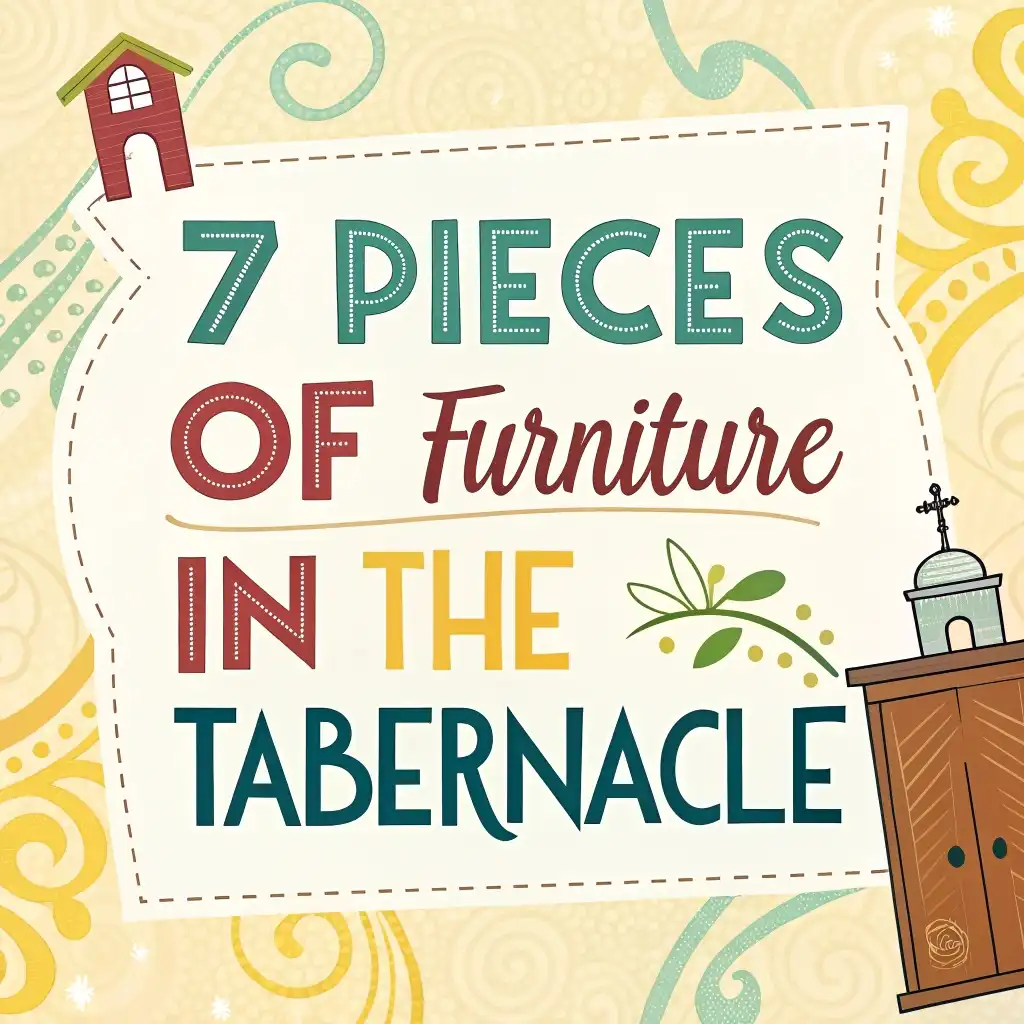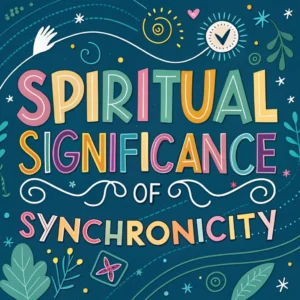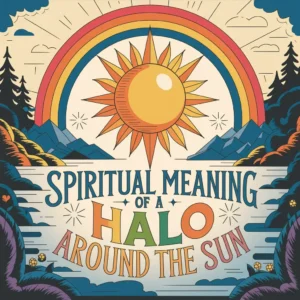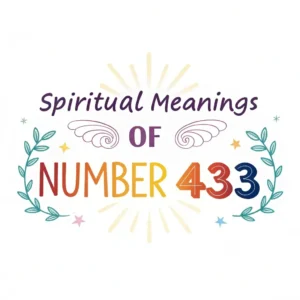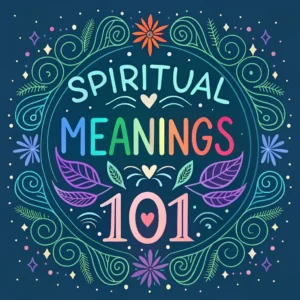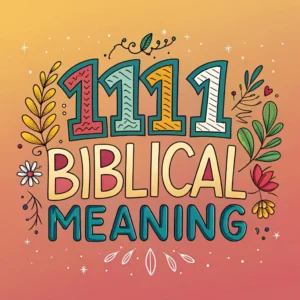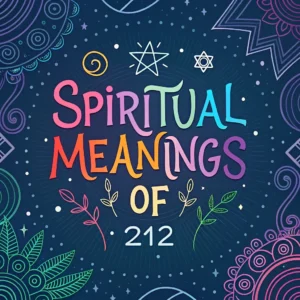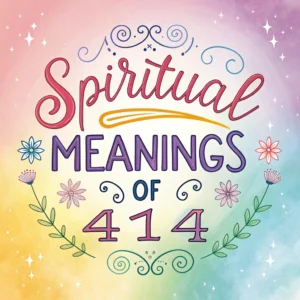Have you ever wondered what the inside of the tabernacle looked like? The tabernacle was a special tent used by the Israelites long ago to worship God. It wasn’t just any tent—it had amazing furniture that held deep meaning!
These pieces weren’t ordinary tables or chairs; they were symbols of God’s presence and His relationship with His people. If you’re curious about these treasures, you’ve come to the right place.
In this blog post, we’ll explore the seven pieces of furniture in the tabernacle, learn their names, and discover why they were so important. You’ll find out how each piece tells a story about faith, obedience, and God’s love for us.
In a Nutshell
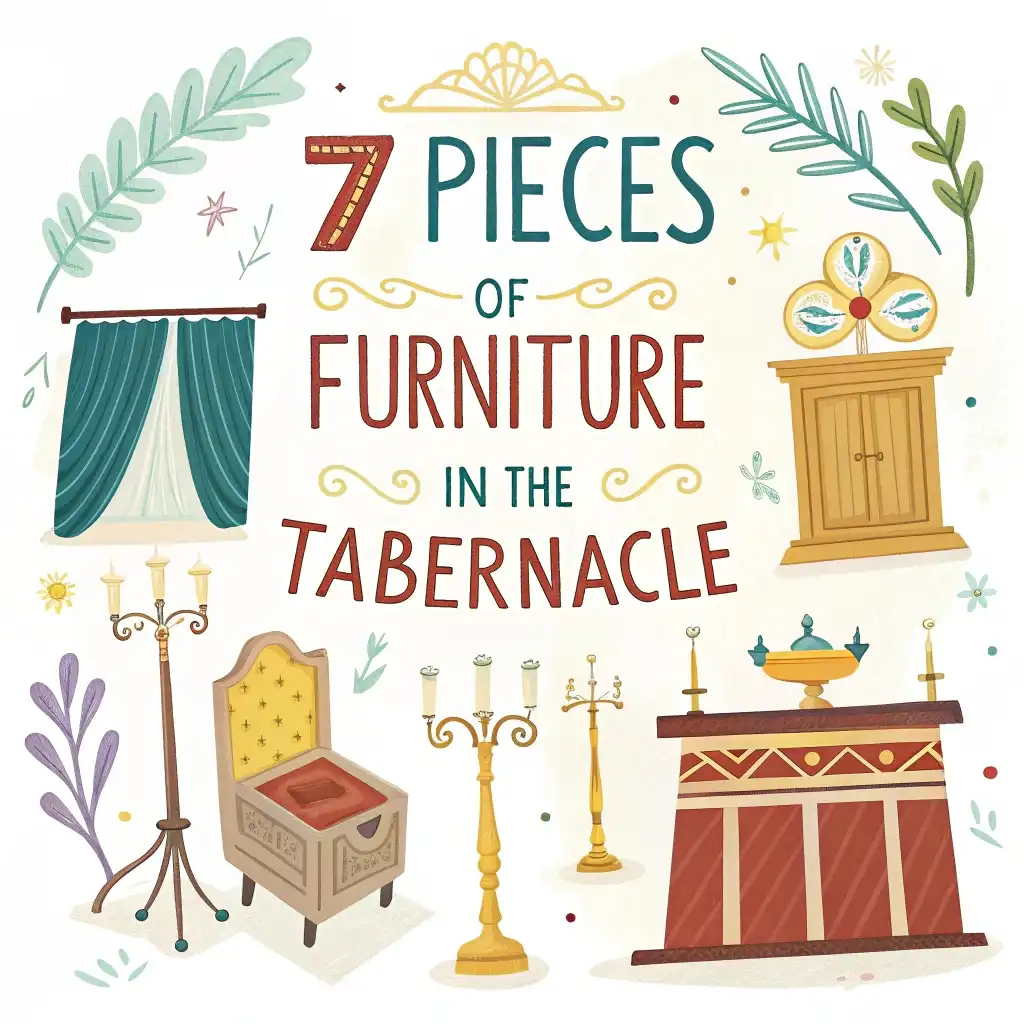
- The tabernacle was a portable temple where God met with His people during their journey through the wilderness.
- There were seven key pieces of furniture inside the tabernacle, each with its own purpose and meaning.
- These items included the Ark of the Covenant, the Table of Showbread, the Golden Lampstand, the Altar of Incense, the Brazen Altar, the Laver, and the Veil.
- Each piece symbolized something important about God’s character and His plan for humanity.
- For example, the Golden Lampstand represented light and guidance, while the Ark of the Covenant showed God’s power and holiness.
- Understanding these objects helps us see how much God cared for His people—and still cares for us today!
- By learning about the tabernacle, we can grow closer to God and appreciate His wisdom.
What Was the Tabernacle?
The tabernacle was like a big, holy tent built by the Israelites after they left Egypt. It was a place where God could live among His people.
Imagine setting up a tent in your backyard—but instead of sleeping bags and snacks, this tent had golden lamps, fancy bread, and even a box called the Ark of the Covenant!
God gave Moses very specific instructions on how to build the tabernacle. He wanted everything to be perfect because it was a reflection of His glory.
The tabernacle had two main sections: the Holy Place and the Most Holy Place (also known as the Holy of Holies). Only certain people, like priests, could go inside. This made the tabernacle extra special and sacred.
Inside the tabernacle, there were seven important pieces of furniture. They weren’t just decorations—they served a purpose.
Some reminded people of God’s promises, others helped them pray, and all of them pointed to God’s greatness. Let’s start with the most famous one—the Ark of the Covenant.
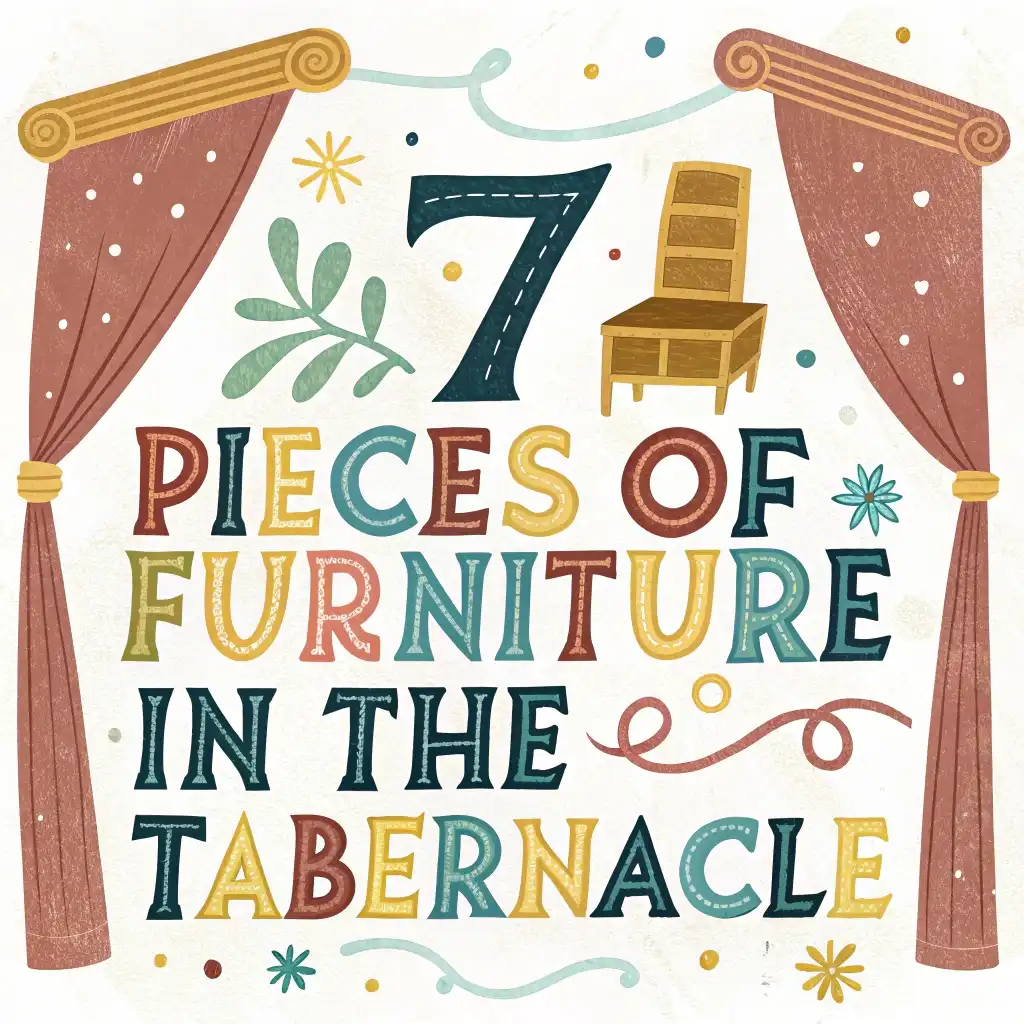
The Ark of the Covenant: A Box Full of Power
The Ark of the Covenant was probably the coolest piece of furniture in the tabernacle. It was a wooden box covered in pure gold, and it had two golden angels on top called cherubim.
Inside the ark, there were three super-important things: the stone tablets with the Ten Commandments, a jar of manna (the food God provided in the desert), and Aaron’s staff that budded.
The Ark of the Covenant was kept in the Most Holy Place, which only the high priest could enter once a year. Why was it so special?
Because it represented God’s presence. When the Israelites traveled, the ark went with them, showing that God was always leading the way.
People believed the ark had incredible power. In fact, there are Bible stories about how it helped win battles and perform miracles.
But the ark also taught an important lesson: God is holy and deserves respect. That’s why no one could touch it without following strict rules. Cool, right?
The Table of Showbread: Bread Fit for Kings
Next up is the Table of Showbread. This wasn’t your average dinner table—it was made of acacia wood and covered in gold. On it sat twelve loaves of bread, arranged in two rows of six. Every week, fresh bread replaced the old loaves, which the priests ate as part of their duties.
So, what did the bread mean? Well, it symbolized God’s provision. Just like He gave the Israelites manna in the desert, He promised to take care of them every day.
The twelve loaves also stood for the twelve tribes of Israel, reminding everyone that God loved all His people equally.
Imagine sitting down at a table set with warm, delicious bread. Doesn’t that sound comforting? That’s exactly how God wanted His people to feel—safe, cared for, and never alone.
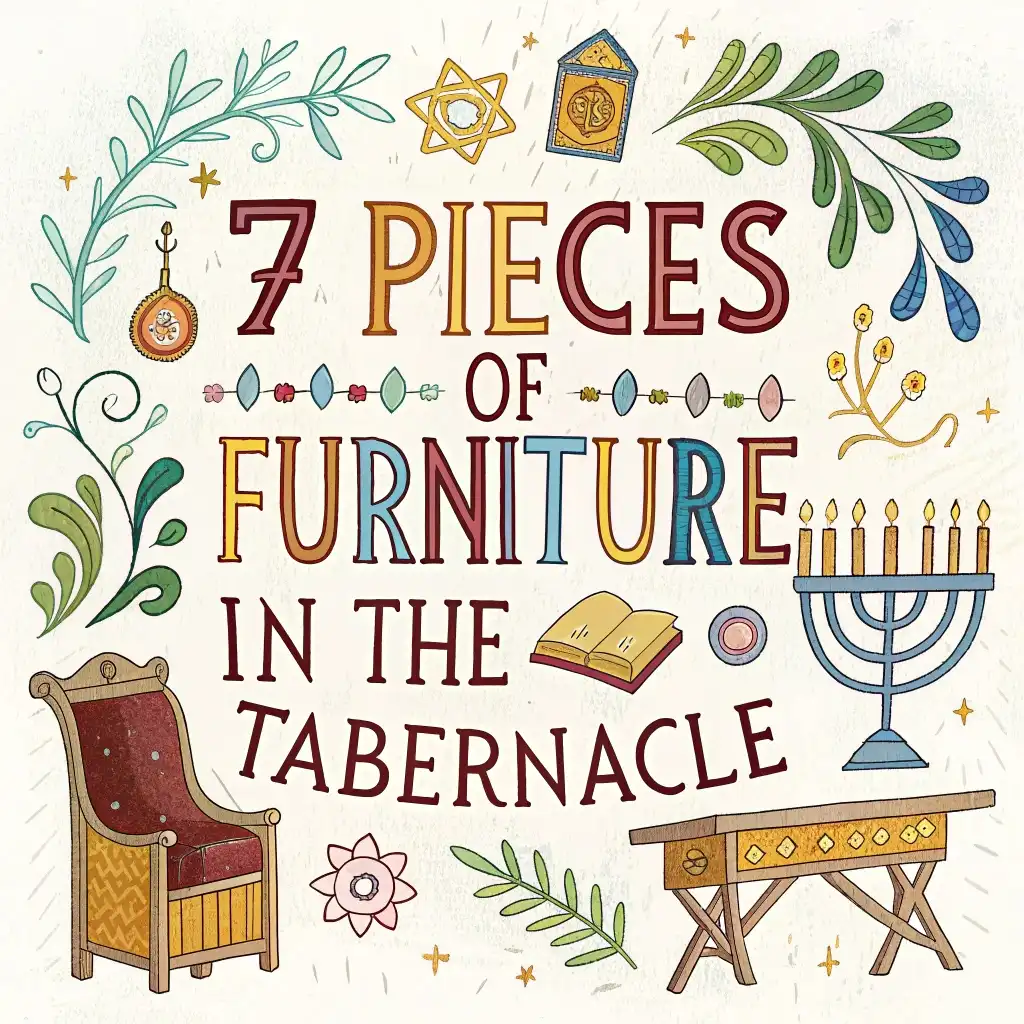
The Golden Lampstand: Light in the Darkness
The Golden Lampstand was another stunning piece of furniture in the tabernacle. Made entirely of gold, it looked like a tree with seven branches. Each branch held a lamp filled with oil, which the priests lit every evening.
This lampstand wasn’t just for decoration—it had a deeper meaning. It represented light and truth. Back then, there were no electric lights, so the glow from the lampstand guided people and showed them the way.
Spiritually speaking, it reminded the Israelites that God is the source of all light and knowledge.
Think about how scary it would be to walk around in complete darkness. Now imagine having a bright lamp to lead you forward. That’s what God does for us—He shines His light into our lives and helps us find the right path.
The Altar of Incense: Smells Like Heaven
If you’ve ever smelled incense at a church or temple, you might already know how calming it feels. The Altar of Incense in the tabernacle worked the same way. It was a small altar made of acacia wood and covered in gold, placed right in front of the veil leading to the Most Holy Place.
Every morning and evening, the priests burned sweet-smelling incense on this altar. The rising smoke symbolized prayers going up to God. It was like sending Him a message saying, “We trust You, and we need Your help.”
The Altar of Incense reminds us that prayer is powerful. Even if we can’t see God, He hears us when we talk to Him. Isn’t that amazing?
The Brazen Altar: Where Sacrifices Happened
The Brazen Altar was the first thing you’d see when entering the tabernacle courtyard. It was huge—about 7.5 feet square—and made of bronze. This is where animals were sacrificed as offerings to God.
Sacrifices might sound strange to us today, but back then, they were a way for people to say sorry to God or thank Him for blessings. The blood from the sacrifices showed that sin has consequences, but God offers forgiveness.
The Brazen Altar teaches us about grace and mercy. No matter what mistakes we make, God is willing to forgive us if we ask Him sincerely.
The Laver: Washing Away Impurities
Between the Brazen Altar and the entrance to the Holy Place stood the Laver, a large basin filled with water. Before entering the tabernacle, priests had to wash their hands and feet to stay clean.
Why was washing so important? It symbolized purity. Just like dirt gets washed away with water, sin can be cleansed through repentance and faith. The Laver reminded the priests that they needed to be spiritually clean before approaching God.
Even though we don’t have a physical laver today, we can still “wash” ourselves by asking God to forgive our sins and renew our hearts.
The Veil: Separating Humans from God
Finally, we come to the Veil, a thick curtain separating the Holy Place from the Most Holy Place. Only the high priest could pass through the veil, and even then, only once a year.
The veil showed how holy and separate God is from humans. But guess what? When Jesus died on the cross, the veil in the temple tore in half. This meant that now, everyone—not just priests—could approach God directly.
The tearing of the veil is such good news! It proves that God wants a close relationship with all of us.
FAQs
What was the purpose of the tabernacle?
The tabernacle was a place where God met with His people and accepted their worship.
Who could enter the Most Holy Place?
Only the high priest could enter, and he did so once a year on the Day of Atonement.
Did the furniture have symbolic meanings?
Yes, every piece of furniture symbolized something about God’s nature and His plan for salvation.

Hello, I’m Zephyra, your guide at SpiritualityEssence.com. I’m passionate about uncovering life’s mysteries and sharing transformative insights. Let’s explore mindfulness, ancient rituals, and the path to a more awakened life together. Join me on this spiritual journey!

